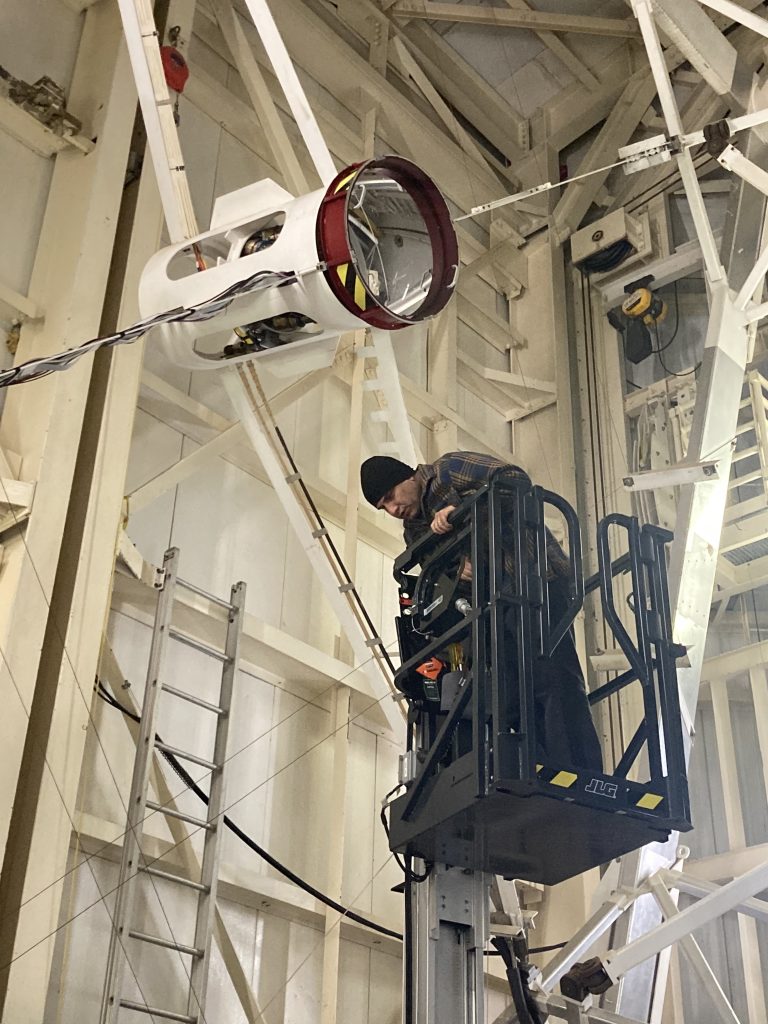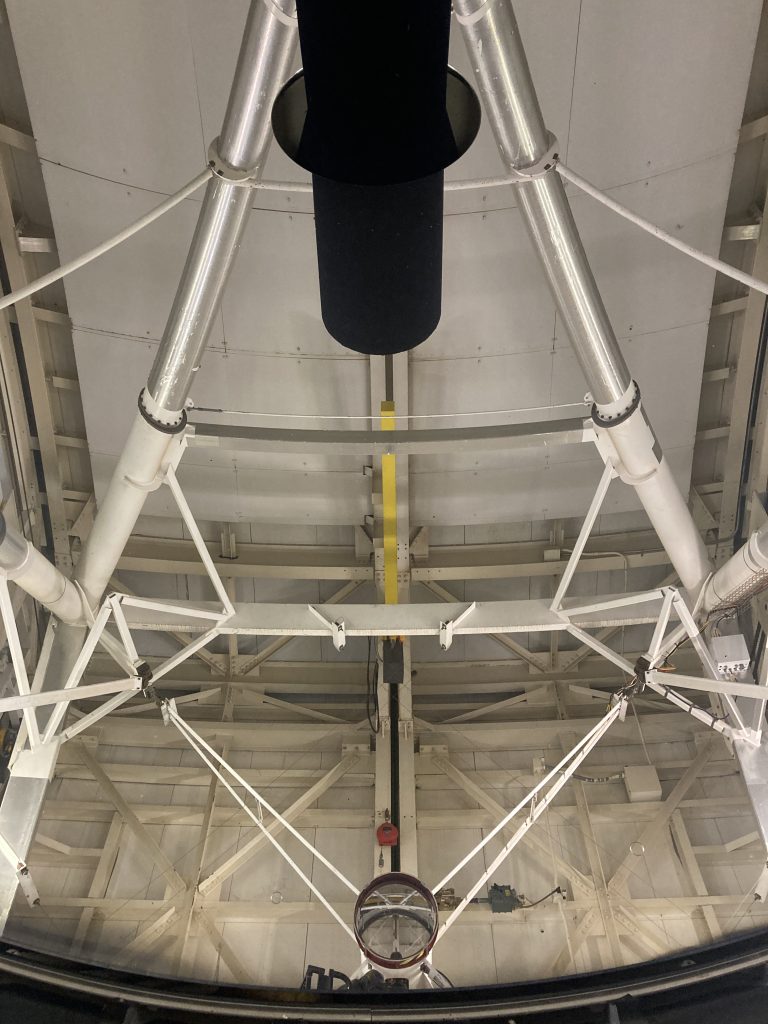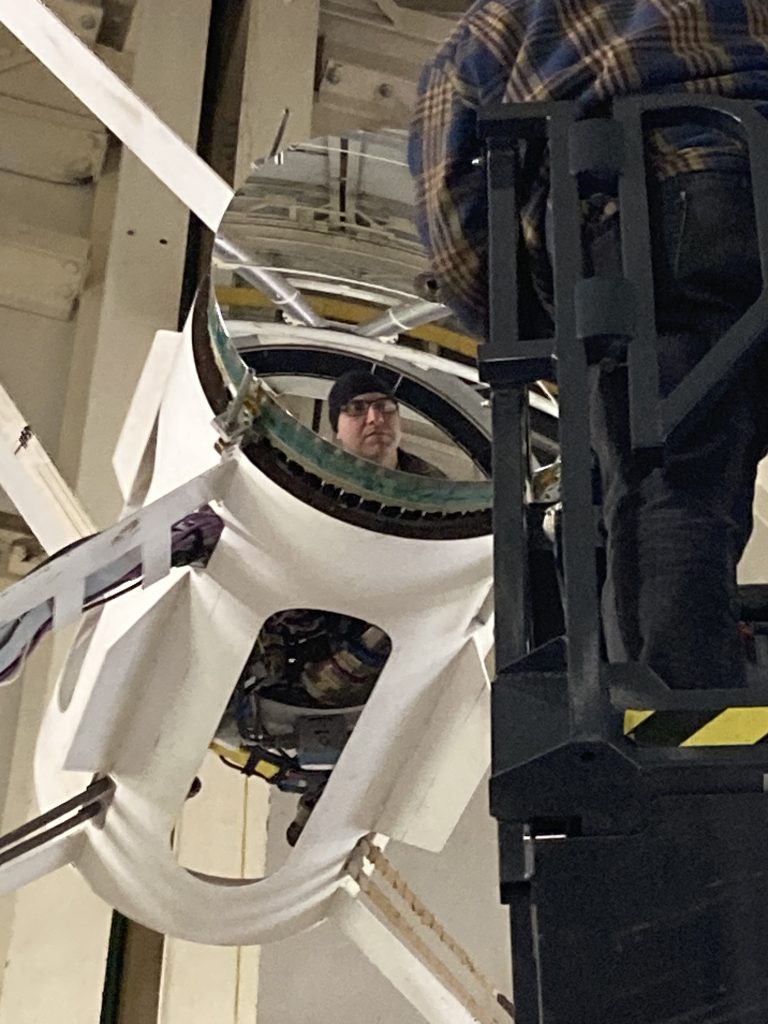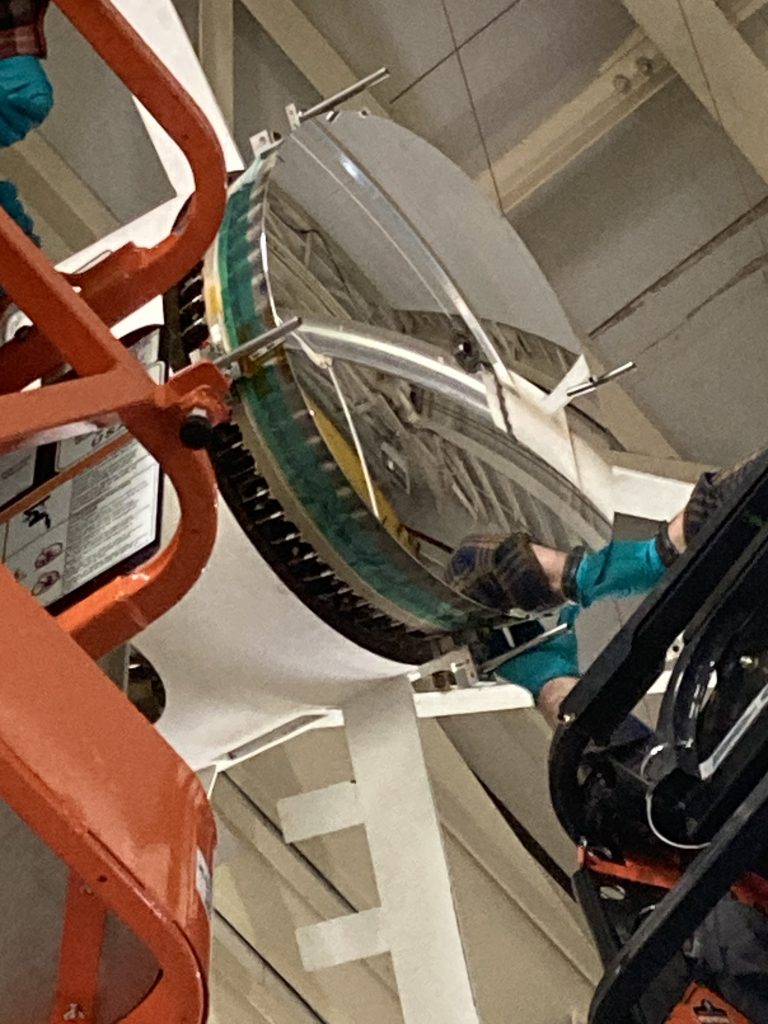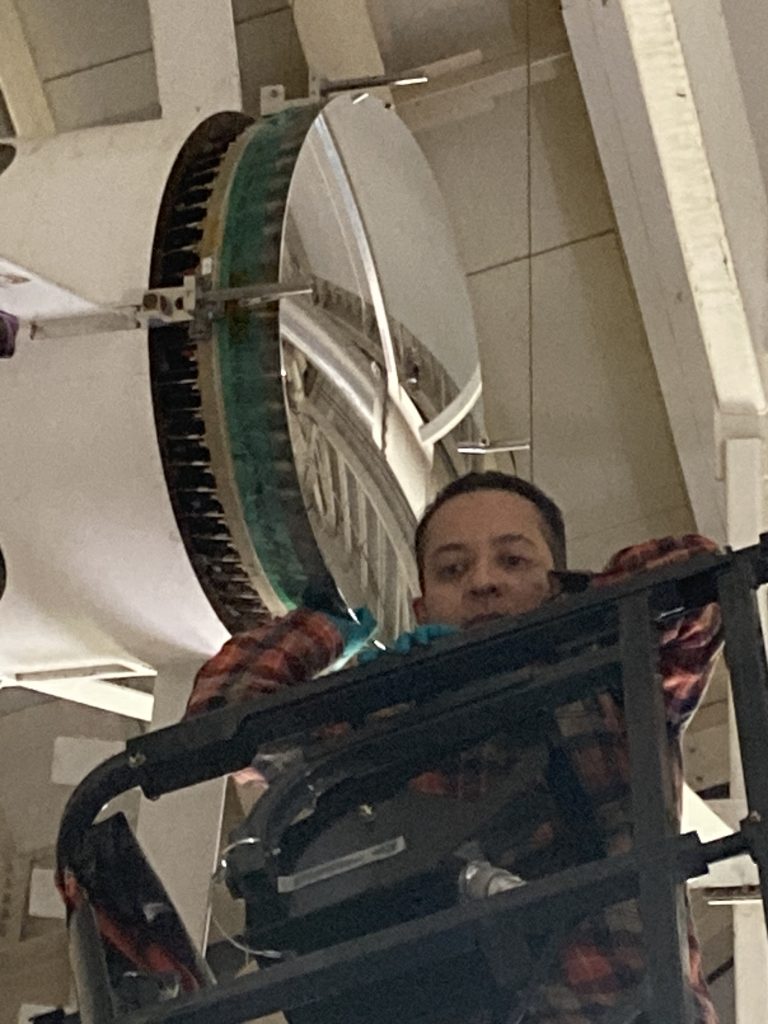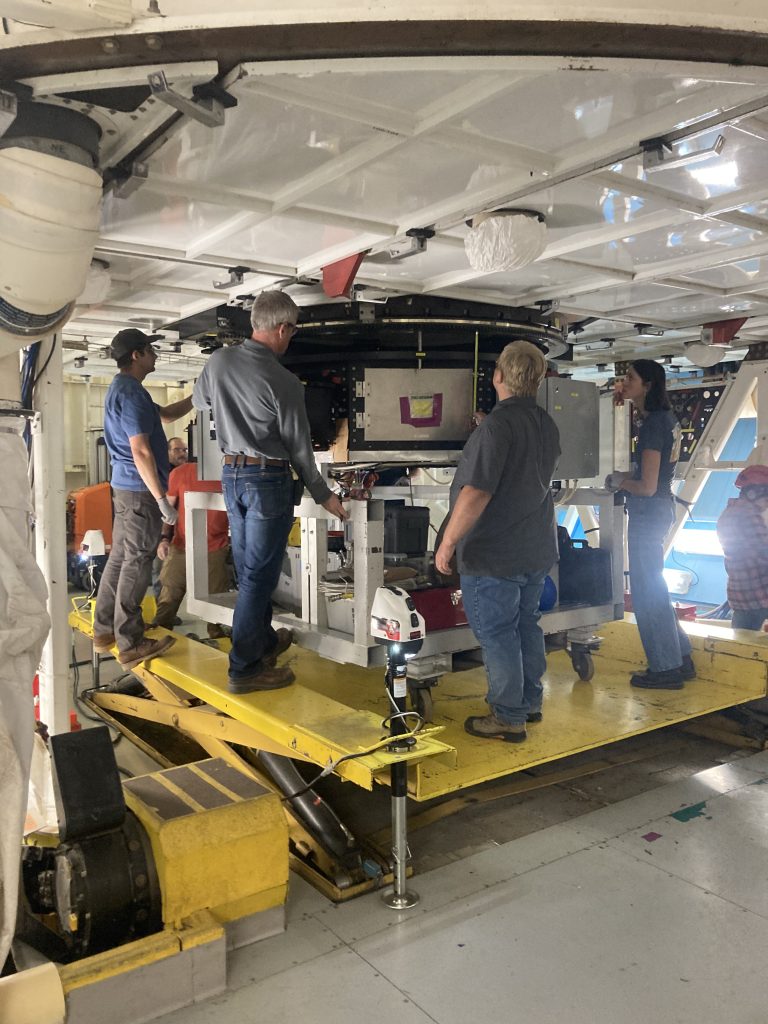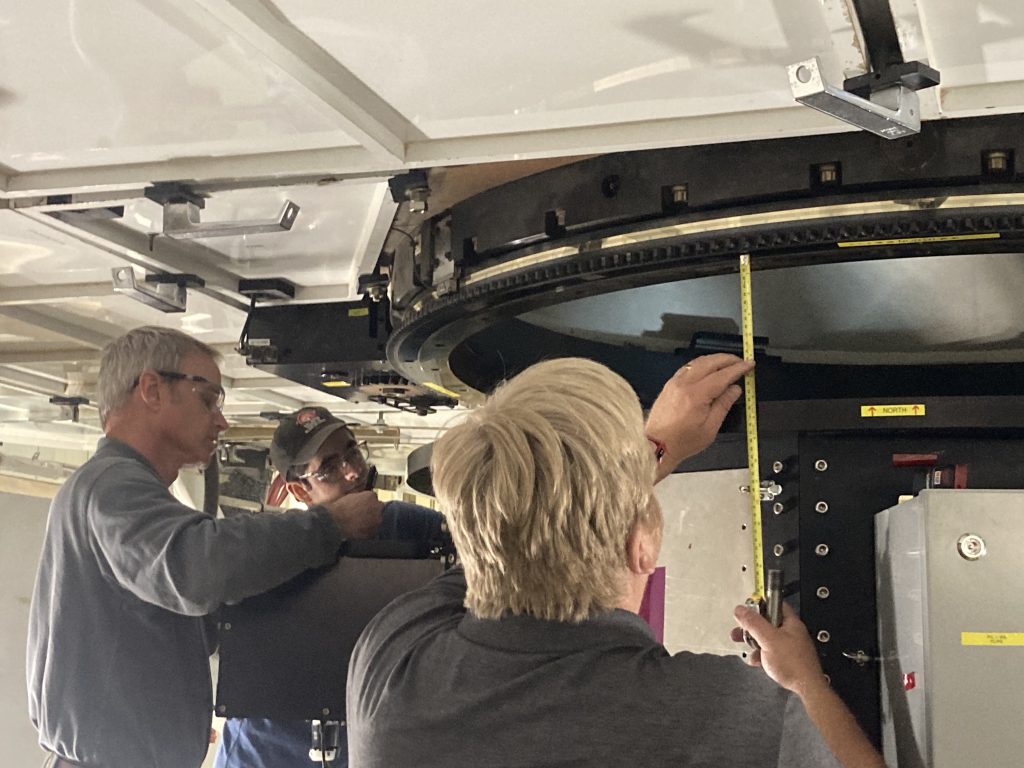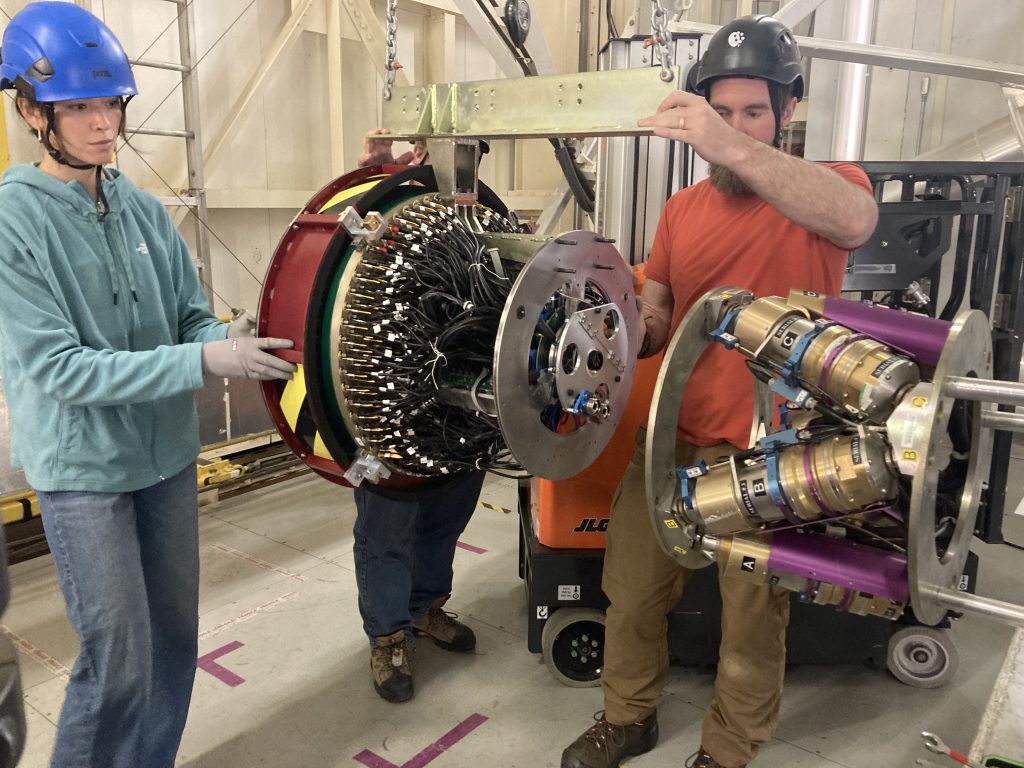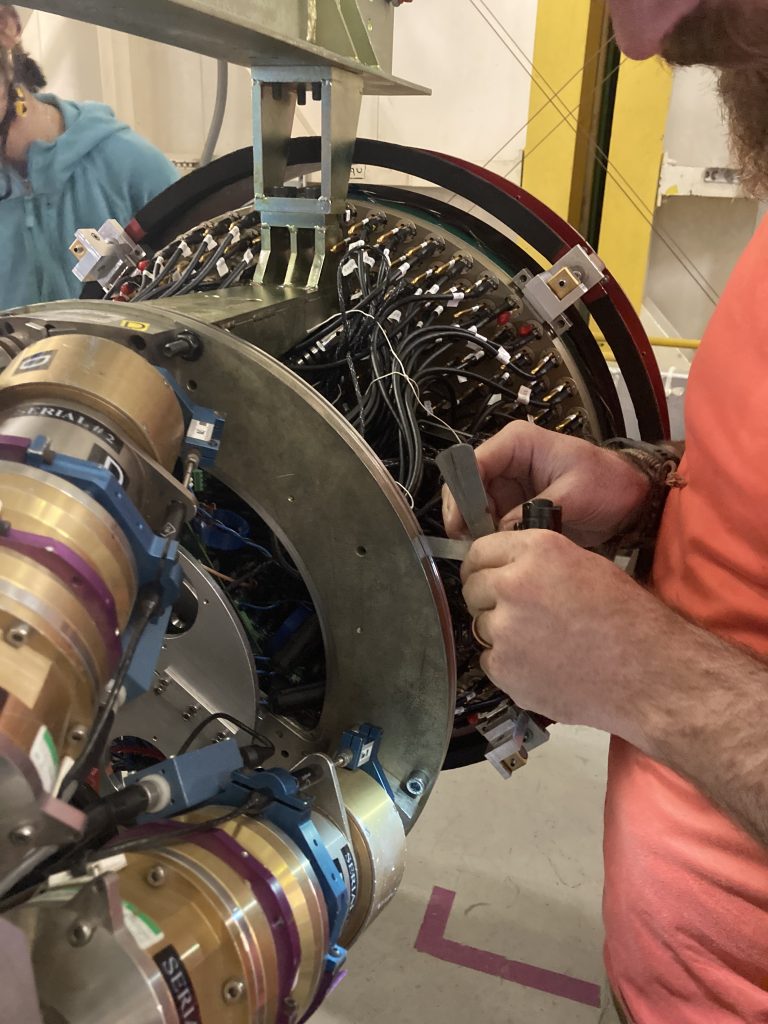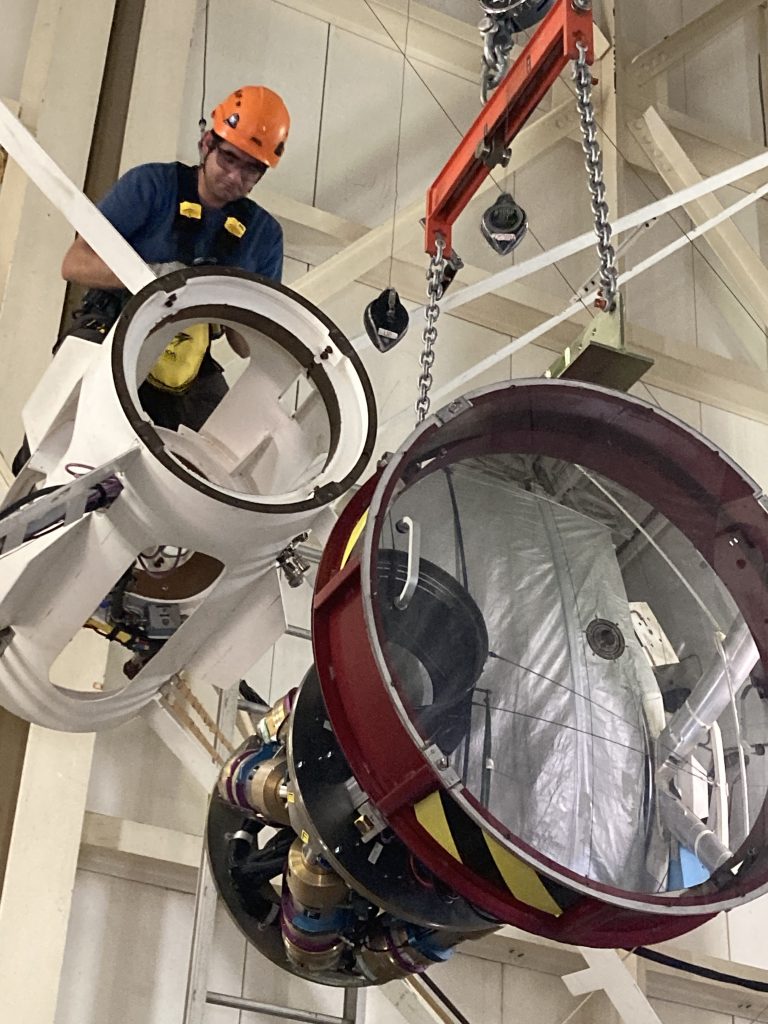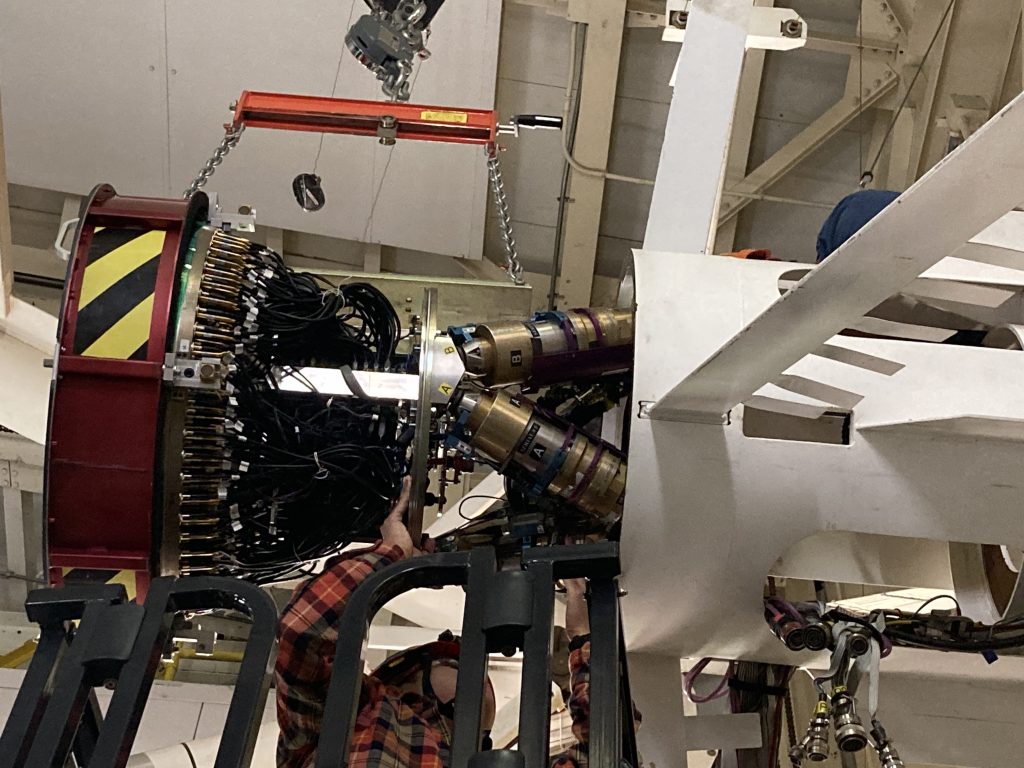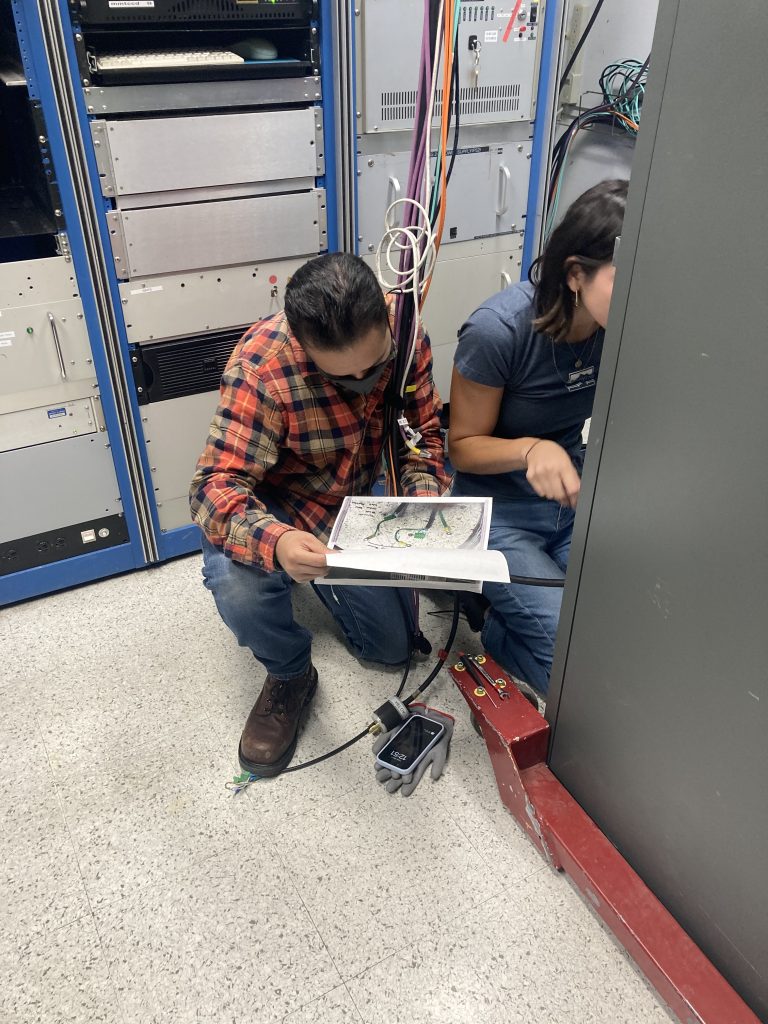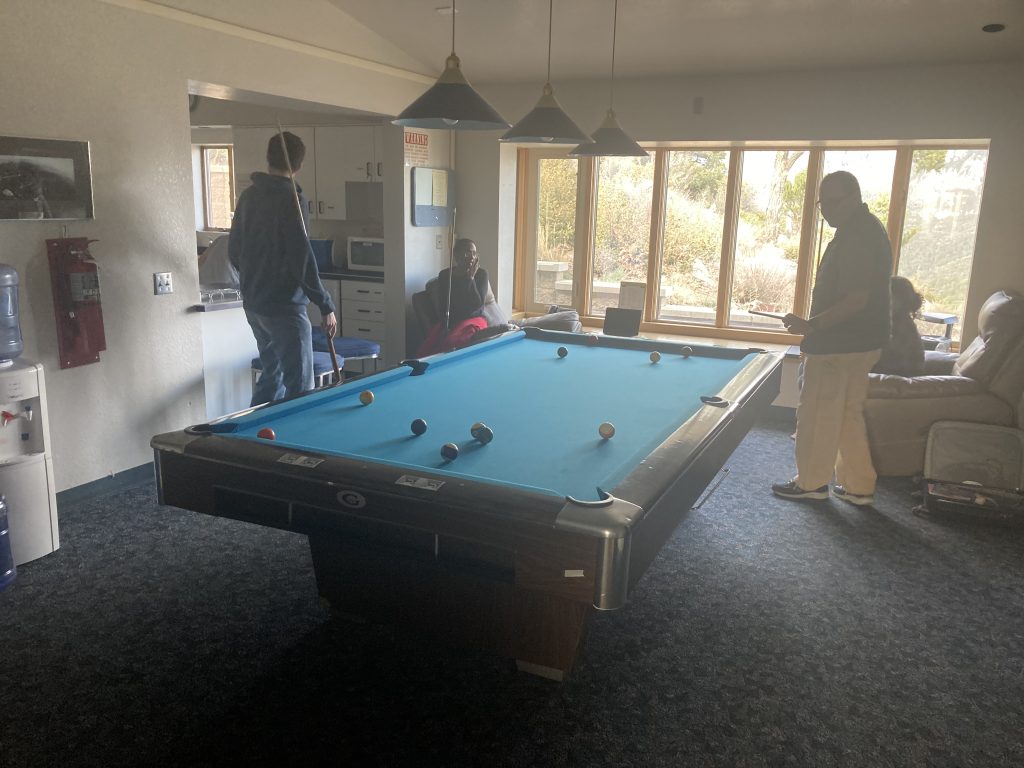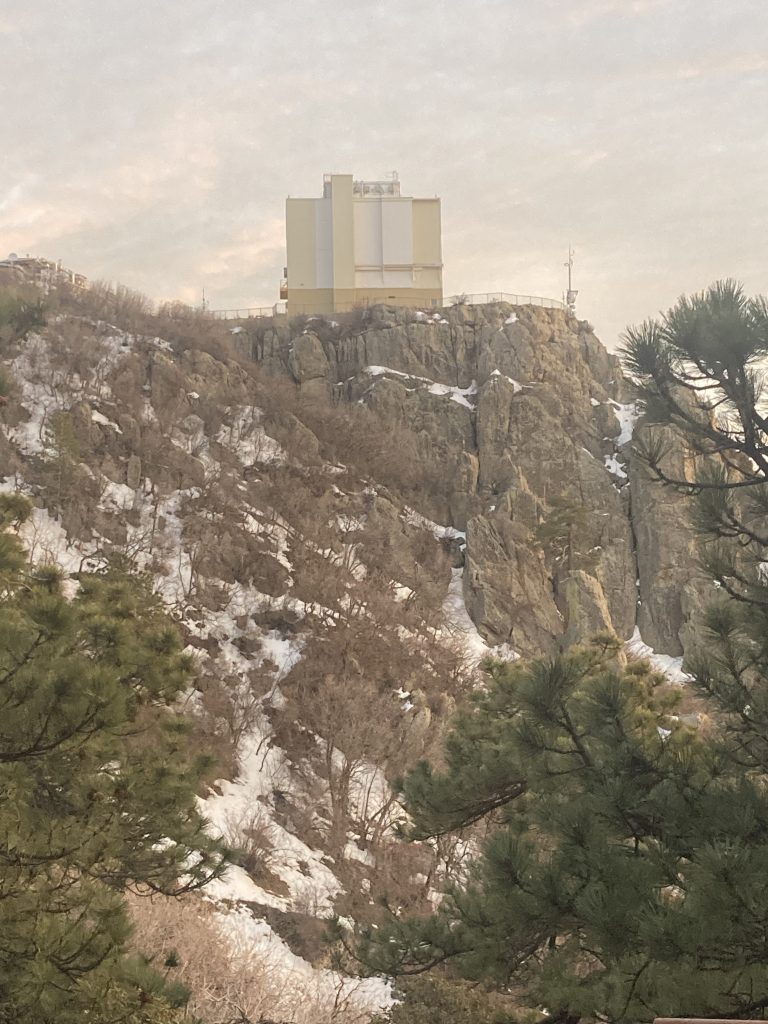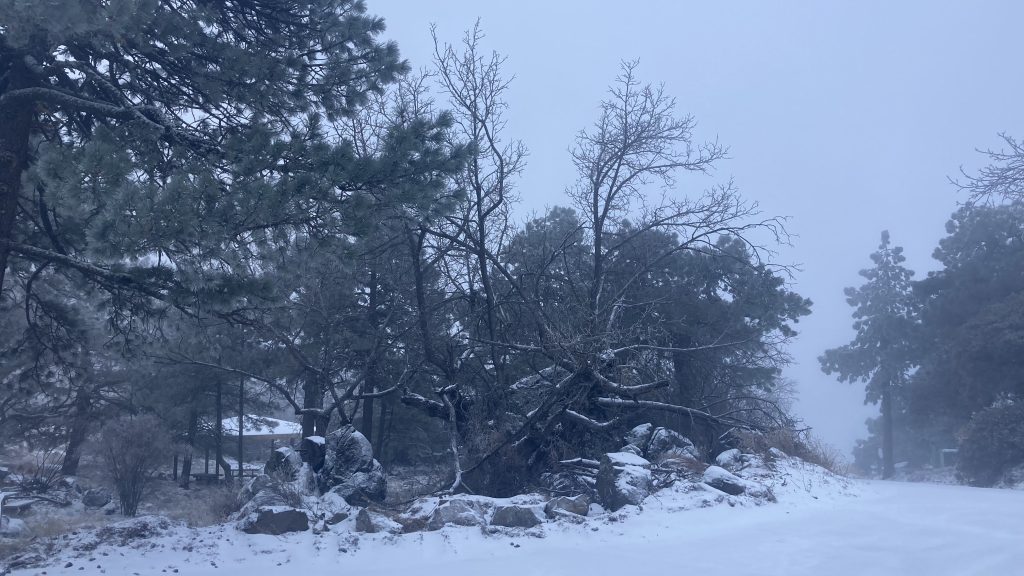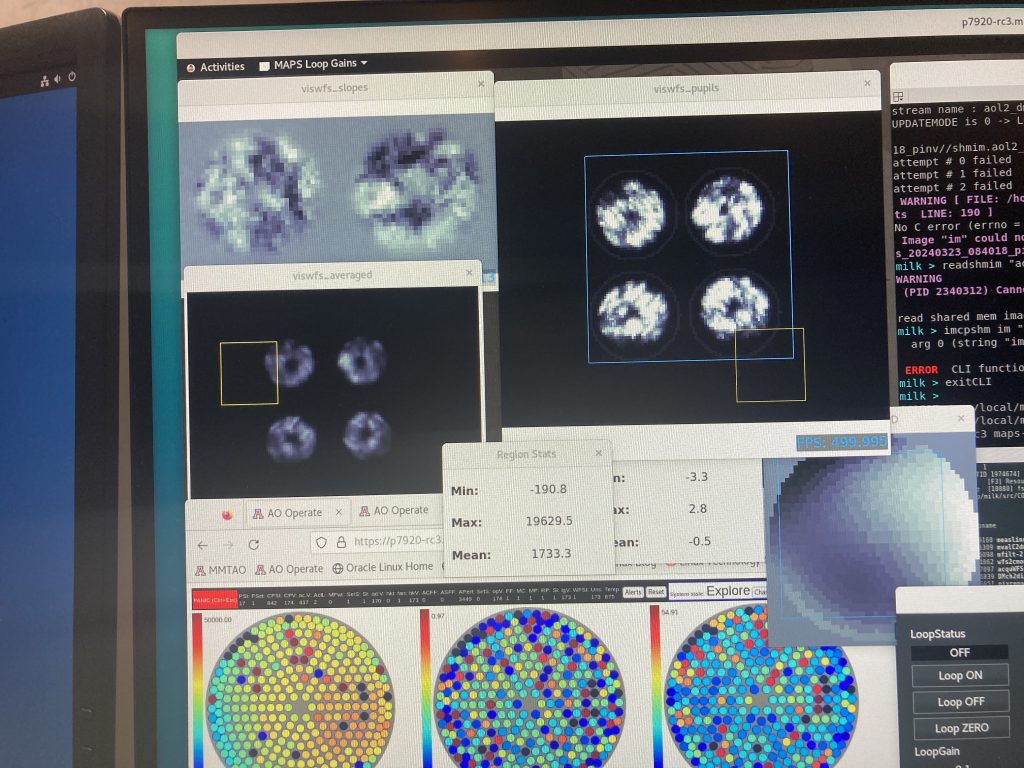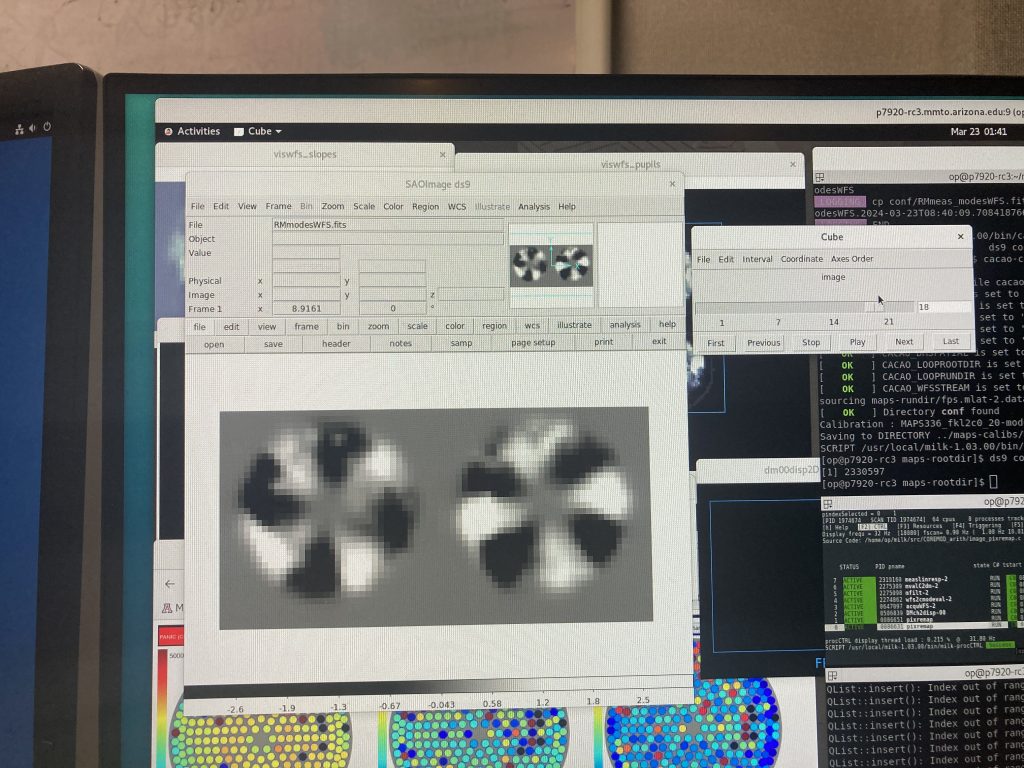
The nice thing about observing at the MMT rather than Magellan (even though they don’t haul food, meal prep, cook, nor clean dishes for us here) is that when you have an urgent need for one of your engineers to come up, it’s only a 2-hour drive (rather than a 2-day flight/drive) from Tucson! Tonight Grant kindly came up and got us aligned.
Why did we need to do alignment again? Well between the telescope and the AO bench we have so many degrees of freedom, and the telescope staff that we work with have different ideas about what to do, and our team has different ideas about what to do, that we had gotten very misaligned and had to start all over again. As I mentioned yesterday, Tim and Ben got us aligned to the chief ray of the telescope. Tonight Grant, Oli (remotely), Bianca, Manny, et al then went back to our first upstream optic: the dichroic — and starting there did a beautiful iterative alignment (even having to move the MOUNT of periscope 1 because it had run out of range) and got us filled pupils! (Especially after Amali also encouraged some of the edge actuators to do a better job holding up their edges.)
Yes we are still a bit unclear as to why the dichroic was so far off (since we hadn’t touched it and we THOUGHT we were on the chief ray in January when we installed/aligned it), and why periscope 1 had wandered so far. But I think it’s just a complex system with many parts controlled by different teams and we have different staff (both from MMTO and MAPS) at different times so we never quite know if we are doing things the same way every time, no matter how hard we try, especially since the system is still so new and we are constanly making adjustments and working out kinks anyway.
So we will continue to learn more about the situation, but thanks to Grant for coming up and Oli for being on the phone and to everyone for filling our pupils once again!

After this we went on-sky and Andrew got the IR CTL pupil tracking working! And then Jacob and Suresh took Do-Crimes interaction matrices and closed the loop with a 20-modes loop! We were debugging this at dawn when some patchy clouds suddenly showed up (after a beautiful clear night with 0.8-1” seeing) and so it was time to call it a night (It’s a night!).

The best 15 minutes of the day were one of my trips up to see the alignment in the dome.
Song of the night: “I’m a Slave 4 U” by Britney Spears (2001)



